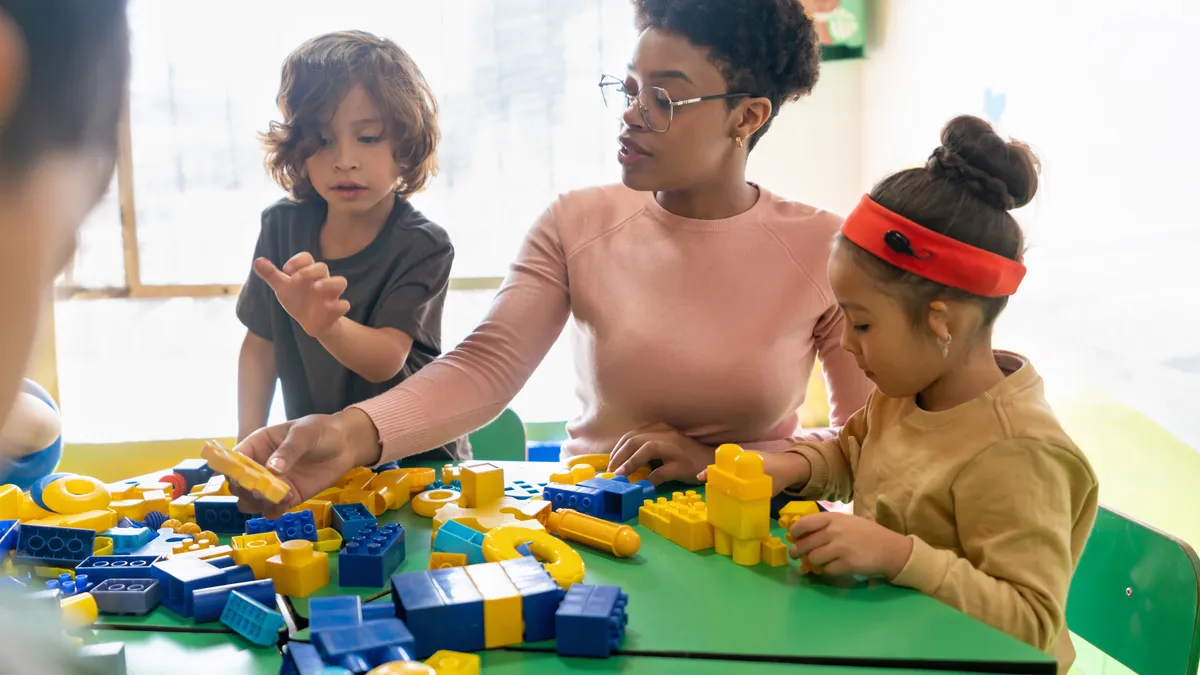Students are increasingly surrounded by new challenges and complexities, from managing the pressures of social media to adjusting to the post-pandemic classroom. This situation has made skills such as goal-setting, empathy, resilience and self-awareness critical, but many students today require extra support in those areas.
Nine in 10 public schools surveyed by the U.S. Department of Education said the pandemic hurt students’ behavioral (84%) and socioemotional (87%) development. Yet, attempts to include curricula to address these skills — called social-emotional learning, or SEL — have garnered intense criticism. Although the term “SEL” might be stirring up debate in your school or district, research shows that an outsized majority of parents support schools teaching SEL skills.
That means the issue isn’t with the traits themselves but rather with a misunderstanding about what SEL entails. Here are three common misconceptions about SEL and how educators can work with families to understand their resistance and work together to foster acceptance.
Addressing common misconceptions about SEL
SEL has become a hot button issue in part because many families aren’t precisely sure what it entails, observes Tyler Vassar, a school psychologist and assessment consultant with Pearson. Asking questions to help understand families’ unique concerns and addressing misinformation that’s shaping them can help achieve buy-in.
Here are three statements you might hear when talking to families about SEL.
“SEL only teaches kids about their feelings.”
Teaching kids about their feelings is part of SEL — and its proponents would argue that the ability to understand and label feelings is vital. However, SEL goes much deeper, Vassar explains: “SEL includes skills related to relationship-building, self-management, responsible decision-making, time management, confidence and many other competencies that most of us would agree are critical.”
“SEL is only necessary for students who are exhibiting behavior difficulties.”
Everyone can benefit from these competencies, even adults, Vassar says. In addition, SEL skills shouldn’t be categorized as something that needs to be taught to certain kids in one specific way. Instead, educators should weave SEL ideas through all lessons and model SEL skills themselves.
“A focus on SEL comes at the expense of academics.”
“We often hear that kids go to school to learn math, science and history, and focusing on SEL means we are shortchanging those subjects,” Vassar says. In fact, SEL skills can help students succeed in their core academic subjects. For example, learning how to manage time and set goals helps students complete homework assignments on time. Interpersonal skills help them work better in groups, which can translate to success outside of school in settings that require collaboration like on sports teams, in community groups and at work.
SEL’s connection to “hard skills”
One reason families tend to value hard skills over soft skills is because hard skills are easier to measure. “You can assess mastery of math concepts, whereas it’s more abstract to quantify how good you are at time management,” Vassar says.
However, a new report on SEL by the Yale School of Medicine shows that while SEL skills might be difficult to directly assess, they have a noticeably positive effect on things that are measurable. The report is one of the most comprehensive dives into SEL-related curriculum yet, evaluating 424 studies of SEL in K-12. It found that learning SEL skills can lead to improvements in academic performance, overall well-being, and feelings of safety and security.
Among its most notable findings: Students who participated in SEL programs had better school attendance than those who did not. That’s particularly eye-opening as schools struggle with chronic absenteeism.
“One considerable barrier to learning that is sometimes overlooked is poor attendance,” Vassar says. “I don't think it's an accident that these students who reported better relationships with their teachers and felt more supported were more likely to attend school.”
Another interesting finding was that SEL programs are associated with a positive impact on mental health and can act as a protective factor for students.
“They learn resiliency, which helps them cope with challenges. They improve their social skills, which leads to more positive relationships with teachers and peers. And they do better in school as they master time management,” Vassar says. “All of those collectively contribute to a more positive self-image. All of those work together to create that protective factor that underlies overall better mental health.”
Working with families to embrace SEL
Many critics of SEL in K-12 argue that these skills should be taught at home rather than at school. Vassar doesn’t discount the need for SEL education at home, too.
“Think about our first teachers who exposed us to social and emotional competencies. It’s not instructors in schools, it’s our caregivers,” Vassar says. “That’s why it’s important for educators to consider families as partners and build off that foundation to help strengthen social-emotional development.”
Vassar recommends educators address misconceptions about SEL through open communication with caregivers that emphasizes how SEL teaches life skills. “Invite them to collaborate and offer genuine opportunities for them to share feedback or concerns,” Vassar says. “Address it as an opportunity to highlight how SEL is integrated into achievement.”
He suggests schools partner not only with families but also with community groups such as the local YMCA, sports programs and after school clubs, infusing commitment to these skills throughout a child’s environment.
To learn more about how SEL skills can bolster mental health and student achievement in your school, visit Pearson’s Mental Health Resource Center.










